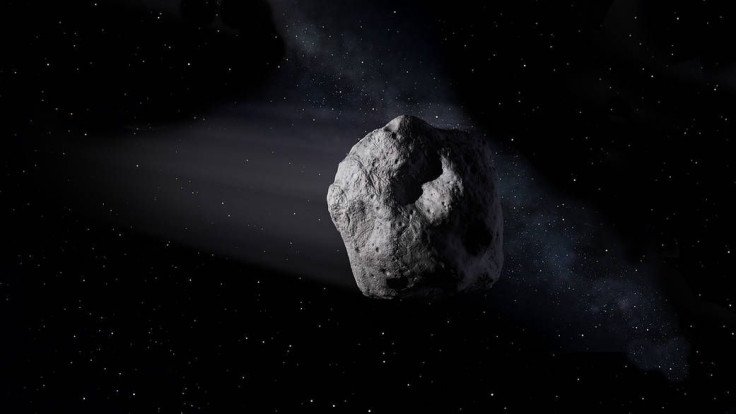NASA Asteroid Tracker: 1,080-Foot 'Potentially Hazardous' NEO To Skim Earth Tomorrow

NASA’s Center for Near Earth Object Studies (CNEOS) has detected a massive asteroid that’s currently headed for Earth’s vicinity. According to the data collected on the asteroid, the gigantic space rock is taller than the Eiffel Tower in Paris.
CNEOS first observed the asteroid, labeled as 2008 KV2, on May 28, 2008. The agency noted that the asteroid is expected approach Earth on June 27 at 10:01 pm ST.
Based on NASA’s observations on the asteroid, it has a maximum diameter of almost 1,100 feet. It is currently travelling at a speed of over 25,400 miles per hour, making it over 10 times faster than the velocity of 5.56 round fired from a rifle.
Once 2008 KV2 approaches Earth, NASA estimated that it will be about 0.04548 astronomical units or roughly 4.3 million miles from the planet’s center.
According to the extensive data compiled by CNEOS on 2008 KV2’s trajectory, the asteroid has been a frequent visitor in Earth’s neighborhood. In fact, the asteroid has been passing by Earth and Venus on almost a yearly basis.
The last time 2008 KV2 flew past Earth was less than a year ago on Dec. 11, 2018. During this time, it approached the planet from a distance of 0.47102 astronomical units or 44 million miles away.
The next time the asteroid will visit Earth’s vicinity is on April 1, 2022.
Given 2008 KV2’s massive size and orbital path, it certainly poses a threat to Earth’s safety. Previous studies have already proven that asteroids and other space objects can get affected by the gravitational pull of nearby planets. This means their paths can change if they pass by a planet that’s big enough to have a strong gravitational force.
In 2008 KV2’s case, its path always changes each time it passes by Earth and Venus, which is why its distance from these planets always changes each year. Because of this, there’s always a chance that 2008 KV2 might get nudged into a path that’s on a direct collision course with Earth.
Due to its massive size, the asteroid will surely release a huge amount of energy if it explodes mid-air or hits Earth’s surface.
© Copyright IBTimes 2025. All rights reserved.





















